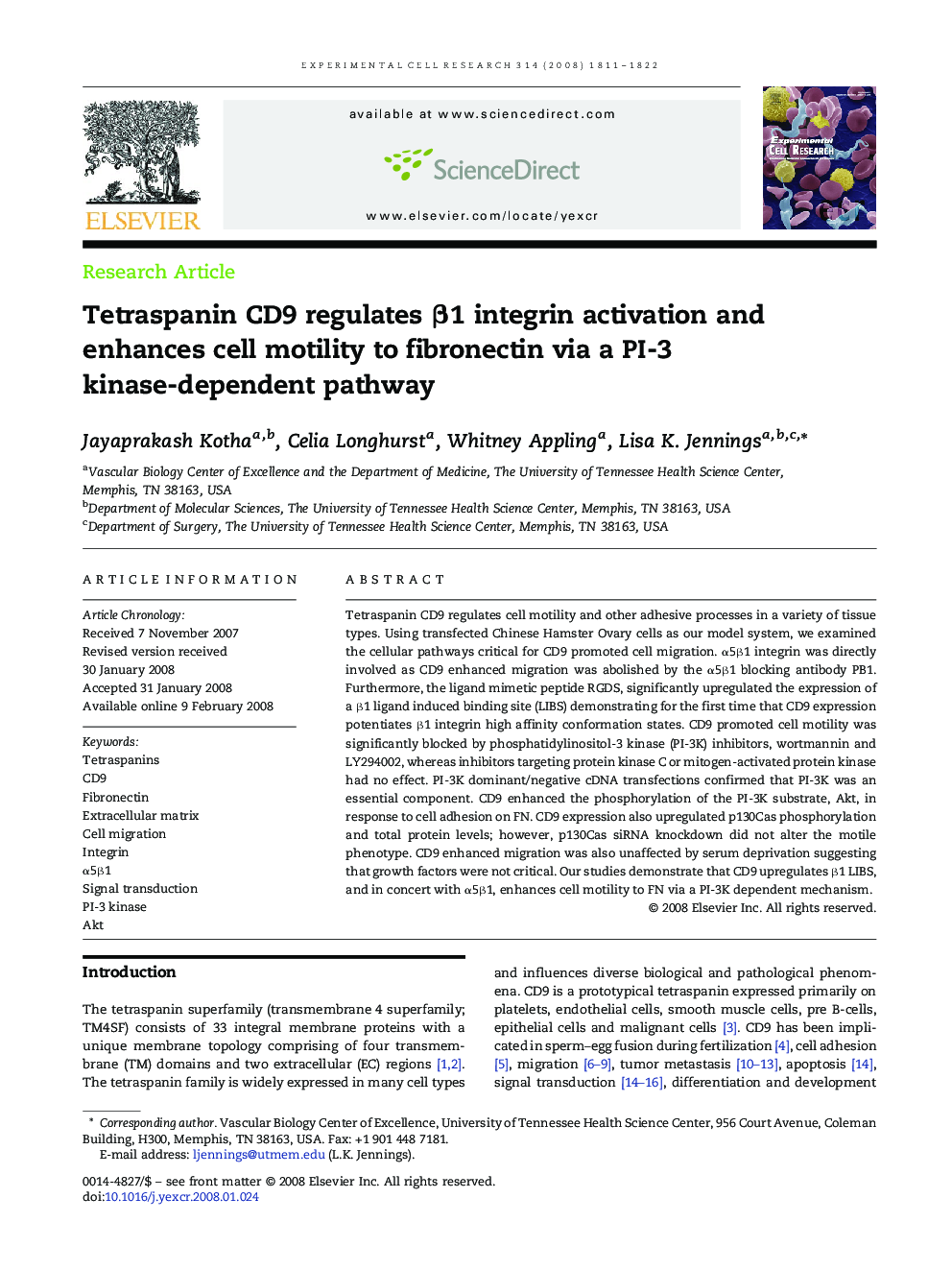| Article ID | Journal | Published Year | Pages | File Type |
|---|---|---|---|---|
| 2132219 | Experimental Cell Research | 2008 | 12 Pages |
Tetraspanin CD9 regulates cell motility and other adhesive processes in a variety of tissue types. Using transfected Chinese Hamster Ovary cells as our model system, we examined the cellular pathways critical for CD9 promoted cell migration. α5β1 integrin was directly involved as CD9 enhanced migration was abolished by the α5β1 blocking antibody PB1. Furthermore, the ligand mimetic peptide RGDS, significantly upregulated the expression of a β1 ligand induced binding site (LIBS) demonstrating for the first time that CD9 expression potentiates β1 integrin high affinity conformation states. CD9 promoted cell motility was significantly blocked by phosphatidylinositol-3 kinase (PI-3K) inhibitors, wortmannin and LY294002, whereas inhibitors targeting protein kinase C or mitogen-activated protein kinase had no effect. PI-3K dominant/negative cDNA transfections confirmed that PI-3K was an essential component. CD9 enhanced the phosphorylation of the PI-3K substrate, Akt, in response to cell adhesion on FN. CD9 expression also upregulated p130Cas phosphorylation and total protein levels; however, p130Cas siRNA knockdown did not alter the motile phenotype. CD9 enhanced migration was also unaffected by serum deprivation suggesting that growth factors were not critical. Our studies demonstrate that CD9 upregulates β1 LIBS, and in concert with α5β1, enhances cell motility to FN via a PI-3K dependent mechanism.
